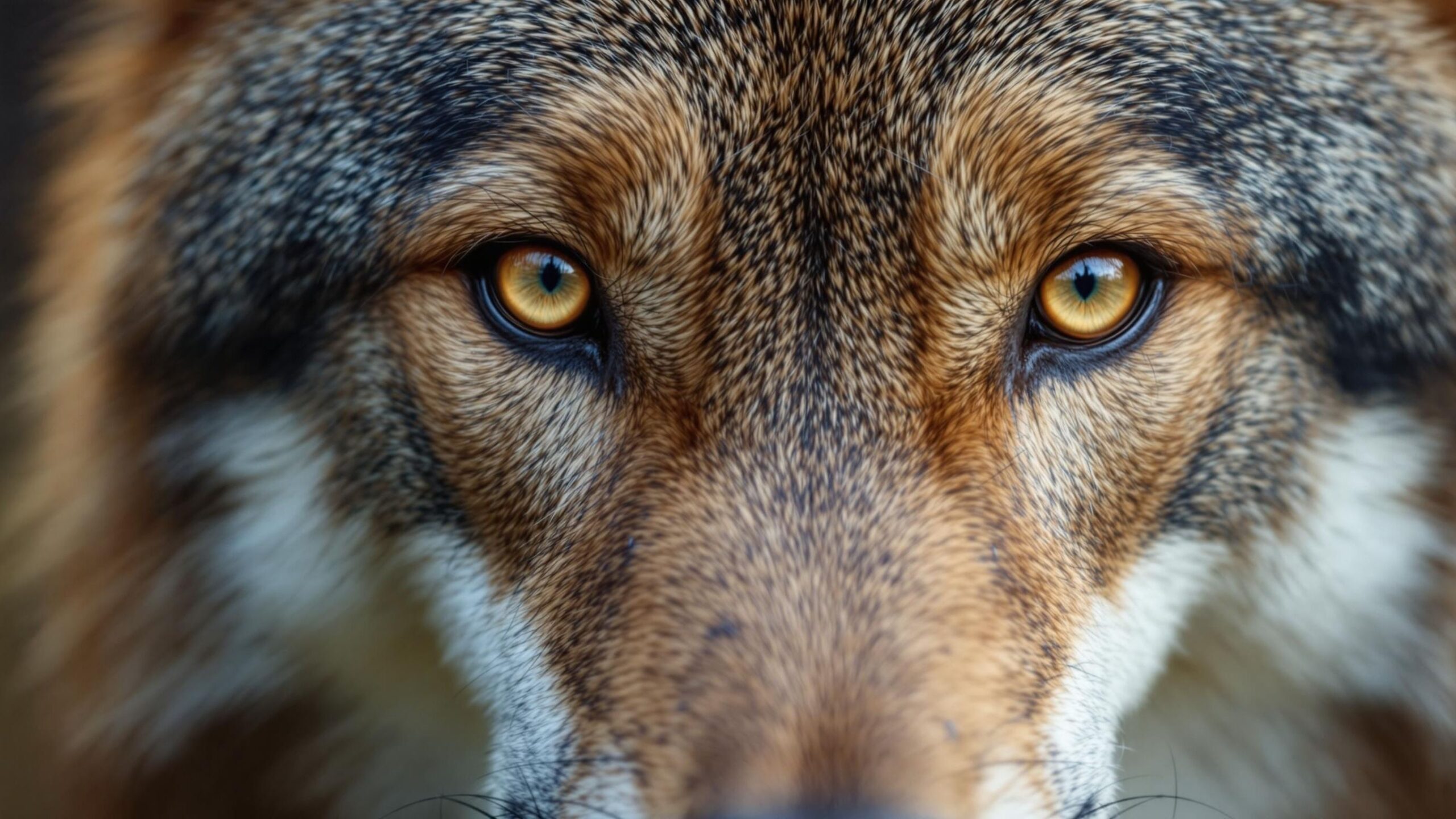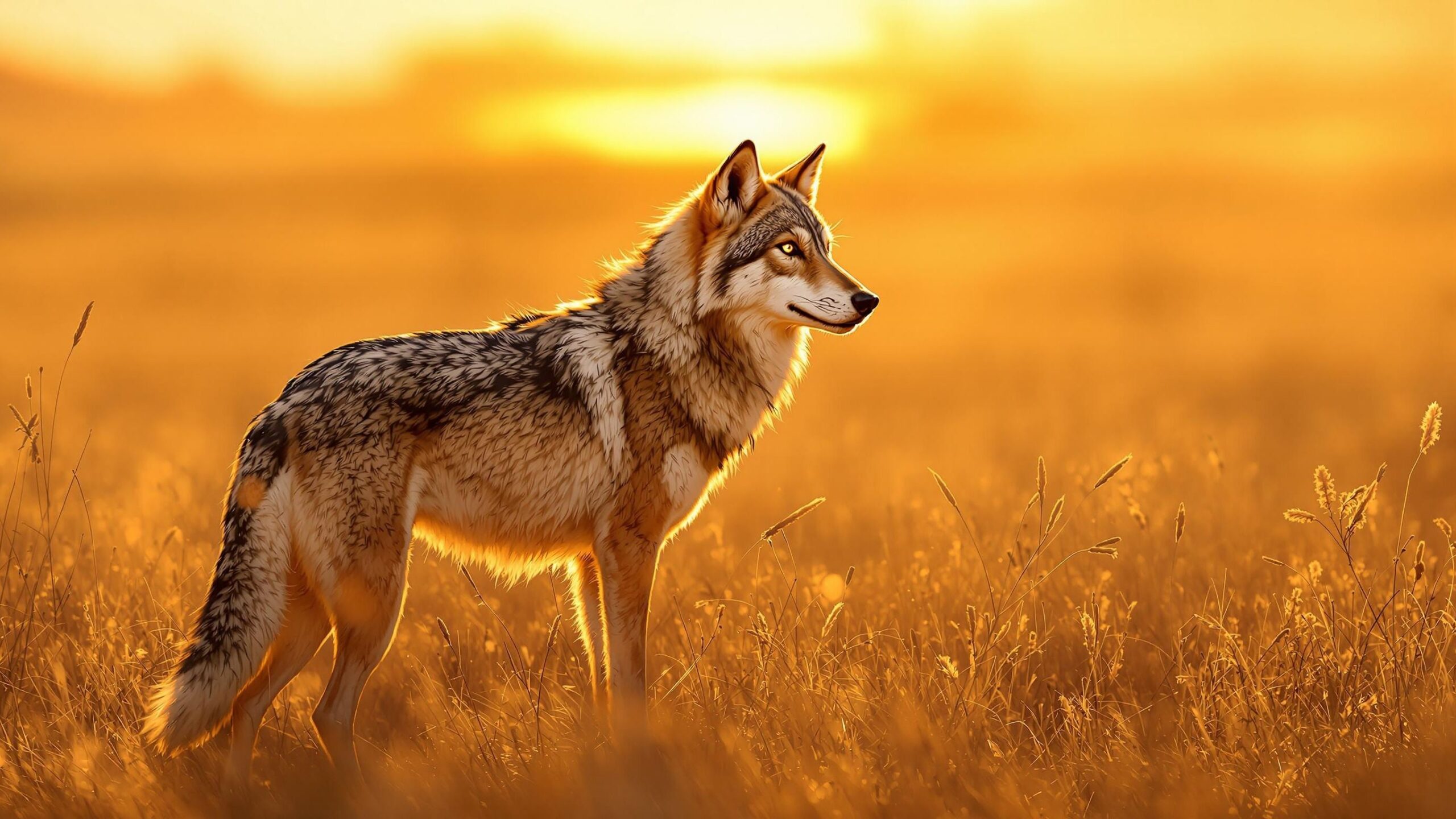The Indian Wolf: Elusive Spirit of the Subcontinent
In the vast and varied landscapes of the Indian subcontinent, from golden grasslands to arid plateaus, roams a creature that has inspired myths, stirred ancient fears, and continues to quietly shape the balance of nature — the Indian wolf. Scientifically known as Canis lupus pallipes, this subspecies of the gray wolf (Canis lupus) is one of the oldest and most genetically distinct wolf lineages in the world.
Despite its deep roots and evolutionary significance, the Indian wolf remains a lesser-known figure in the world of wildlife, often overshadowed by the region’s more charismatic megafauna like tigers, elephants, and leopards. Yet, this shy, slender predator has its own fascinating story — one of resilience, adaptation, mystery, and an uncertain future.
A Lineage of Legends: Evolution and Taxonomy
The Indian wolf is believed to have diverged from other wolf lineages more than 400,000 years ago, making it one of the most ancient wolf lineages still in existence. Unlike its northern relatives, which are bulkier and often associated with snowy forests and tundras, the Indian wolf has adapted to the dry, hot environments of the Indian subcontinent.
Taxonomically, Canis lupus pallipes was first described in 1832 by British zoologist Brian Houghton Hodgson. For decades, its classification remained contentious, with some arguing that it should be considered a separate species entirely due to its unique morphology, behavior, and genetic structure. However, it currently sits as a distinct subspecies of the gray wolf. Its closest relatives are the Himalayan wolf and the Arabian wolf, both of which have similarly adapted to harsh, open environments.
Slim, Swift, and Built for Survival: Physical Characteristics
The Indian wolf is markedly different from the gray wolves of Europe and North America. Smaller and more lightly built, it typically weighs between 40 to 60 pounds (18 to 27 kilograms) and stands about 26 inches (66 centimeters) tall at the shoulder. Its slender frame, elongated limbs, and narrow chest give it an agile, aerodynamic appearance.
Its coat is short and coarse, an evolutionary adaptation to the heat of the plains and deserts. The fur ranges from pale brown to reddish-gray, often blending seamlessly with dry grasses and sandy soil. Unlike its Arctic cousins, the Indian wolf lacks a thick undercoat and does not develop the plush winter fur seen in colder climates. Its face is lean, with alert, amber-hued eyes and upright ears that pivot to capture the faintest sound. Everything about this wolf — from its musculature to its muted coloring — speaks of speed, stealth, and survival in open, arid terrains.
Wild Lives on Open Ground: Habitat and Range
The Indian wolf is a master of marginal lands. It thrives in grasslands, scrub forests, thorny plains, and semi-arid regions. Its preferred habitats include parts of central and western India, particularly in the states of Maharashtra, Madhya Pradesh, Rajasthan, Gujarat, and Karnataka. Small, isolated populations are also found in southern Nepal and parts of Pakistan.
Unlike many large carnivores that depend on dense forests or specific altitudes, the Indian wolf’s adaptability allows it to survive in human-dominated landscapes, though this often puts it in direct conflict with local communities. It is a species of the open country — running silently across stubbled fields, sleeping in rocky crevices, and hunting by moonlight.
Hunting as a Pack: Behavior and Diet
Indian wolves live and hunt in small packs, usually consisting of a mated pair and their offspring. These packs are notably smaller than those of northern wolves, with five to seven individuals being the norm. This downsized social structure is likely a response to the lower availability of prey and the harsher conditions in their range.
Their hunting tactics are refined and intelligent. Indian wolves rely on speed, stamina, and coordination rather than brute strength. They primarily hunt small to medium-sized ungulates such as blackbuck, chinkara, and nilgai calves. In more human-modified landscapes, they adapt by preying on livestock like goats and sheep, which unfortunately contributes to their image as a threat among pastoral communities. Small mammals, birds, and even rodents supplement their diet when larger game is scarce. These wolves are also known scavengers and won’t hesitate to capitalize on carrion left by other predators or roadkills.

Communication and Social Bonds
Indian wolves are highly vocal and communicative creatures, though their vocalizations are softer and less frequently heard than the iconic howls of northern wolves. Their howls are shorter and higher-pitched, more yip-like, and often used for maintaining contact within the pack or warding off intruders.
Scent marking, body postures, and facial expressions also play essential roles in social dynamics. Bonds between pack members are strong, especially between mated pairs, which often stay together for life. Pups are cared for communally, with older siblings sometimes helping to feed and protect younger ones. Mating occurs during the cooler months between November and January, with pups born around February or March after a gestation period of approximately 63 days. A typical litter consists of four to six pups, born blind and helpless in dens dug into the ground or under rocky outcrops.
A Ghost in the Grass: Behavior Toward Humans
Despite living so close to rural populations, the Indian wolf is rarely seen. It is shy, elusive, and mostly nocturnal. Centuries of persecution have taught this species to avoid human detection with an almost supernatural skill. However, it has not been able to avoid the consequences of human encroachment.
Historically, Indian wolves were viewed with suspicion and fear. Colonial records from the 19th century describe incidents of “man-eating wolves,” though such events were exceedingly rare and likely exaggerated. Today, the conflict is largely economic — herders see wolves as threats to their livestock, and retribution can be swift and brutal. Yet, cultural reverence for wolves also exists. In some tribal traditions, wolves are seen as totems or spiritual beings. Folktales often portray them as wise or mysterious creatures that walk between worlds. These dual narratives — fear and reverence — reflect the complex relationship between humans and this often-misunderstood predator.
Genetic Gold: Unique Lineage and Scientific Interest
One of the most intriguing aspects of the Indian wolf is its genetic heritage. Recent studies have shown that this subspecies possesses mitochondrial DNA that is deeply divergent from that of other gray wolves, suggesting an ancient separation. Some researchers even argue that the Indian wolf could be more appropriately classified as a separate species entirely.
Moreover, this wolf shares certain genetic affinities with the Himalayan wolf (Canis lupus chanco or possibly Canis himalayensis) — another unique lineage adapted to extreme conditions. Together, they represent evolutionary branches that have persisted in South Asia for hundreds of thousands of years, offering vital insights into wolf evolution, adaptability, and resilience. Ongoing research into the Indian wolf’s genome could also reveal clues about its disease resistance, environmental tolerances, and potential evolutionary future — particularly as it continues to interact with domestic dogs and fragmented habitats.
Threatened but Not Forgotten: Conservation Status
The Indian wolf is currently listed under Schedule I of the Indian Wildlife Protection Act of 1972, granting it the highest level of legal protection. However, its conservation status remains precarious. It is not officially recognized as a separate species by the IUCN and is grouped under the broad listing of the gray wolf (Canis lupus), which does not reflect its regional vulnerabilities.
Habitat loss, retaliatory killings, road mortality, and the spread of canine diseases through feral dogs are among the greatest threats. As agricultural land expands and grasslands are converted into farmlands or industrial zones, the Indian wolf’s range continues to shrink. Some estimates suggest that fewer than 3,000 individuals remain in the wild, scattered across fragmented pockets. Conservation efforts are complicated by the wolf’s low visibility and lack of public interest. While tigers and elephants garner widespread support and funding, wolves remain in the background — misunderstood, uncelebrated, and often unloved.
Grassland Guardians: Why Indian Wolves Matter
Far from being mere livestock raiders or ghostly wanderers, Indian wolves play a crucial role in maintaining the ecological balance of India’s open habitats. As apex predators in grassland ecosystems, they regulate herbivore populations, curb disease spread through scavenging, and even indirectly influence vegetation patterns through their prey choices.
Protecting the Indian wolf also means protecting the dwindling grasslands of the subcontinent — ecosystems that are among the most threatened and least conserved in India. These habitats, often labeled as “wastelands,” are actually biodiversity hotspots teeming with rare antelopes, birds, reptiles, and pollinators. Efforts to save the Indian wolf could thus become a rallying point for broader grassland conservation, reconnecting people to landscapes that have been overlooked for far too long.

Coexistence on a Crowded Continent
One of the greatest challenges — and opportunities — for Indian wolf conservation lies in coexistence. Unlike large carnivores that require vast, untouched forests, the Indian wolf has proven capable of surviving in human-modified environments. This adaptability makes it both vulnerable and viable.
Community-based conservation efforts, awareness campaigns, and incentives for non-lethal conflict resolution can go a long way toward fostering peaceful coexistence. Simple measures like improved livestock enclosures, timely compensation for losses, and support for grassland protection can reduce conflict and boost tolerance. Moreover, involving local communities as stewards of their natural heritage — rather than adversaries — could shift the narrative. The Indian wolf does not need complete wilderness; it needs tolerance, understanding, and just enough room to roam.
Echoes of a Forgotten Wild
The Indian wolf may not command headlines or tourist dollars, but it embodies something deeper — the quiet tenacity of life in marginal spaces. It is a survivor of epochs, a whisper from the ancient wild still roaming the dry heart of India. Its future is not yet sealed, but it depends on how we choose to value the unseen, the subtle, and the shadowed lives that share our world.
By learning to see the Indian wolf not as a threat but as a fellow traveler through the age-old landscapes of the subcontinent, we might just find a path to protect not only this remarkable creature but the intricate web of life it anchors. If you’re searching for wildlife that symbolizes endurance, ecological importance, and evolutionary wonder, look no further than the Indian wolf — a creature that walks quietly through India’s past, present, and, with hope, its future.

